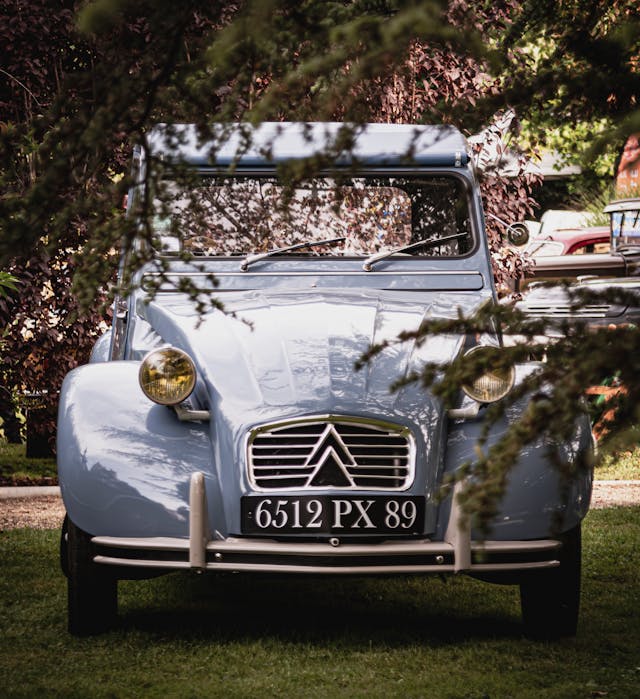Car Club Network
The evolution and structure of the Car Club Network present a fascinating study of how shared interests can build a thriving community. Spanning a wide spectrum from vintage vehicles to futuristic electric cars, these clubs offer more than just a venue for enthusiasts to showcase their prized possessions. They foster knowledge sharing, networking, and a sense of camaraderie that transcend geographic boundaries. As the dynamics of these clubs continue to evolve, one can’t help but ponder on their potential impact on the broader automotive industry and culture.

Key Takeaways
- Car Club Networks are structured organizations uniting car enthusiasts with common interests, often governed by a committee or board.
- Membership in car clubs provides networking opportunities, access to exclusive events, and financial benefits like discounts on parts and services.
- There are diverse types of car clubs, including classic, racing, electric vehicle, off-road, and luxury car clubs, each with a unique focus.
- Car clubs organize events such as car shows and road trips, requiring meticulous planning, venue selection, and promotional strategies.
- Car Club Networks foster knowledge sharing and community learning, with discussions on mechanics, vehicle care, modifications, engine tuning, and problem-solving strategies.
Understanding the Car Club Network
Although initially perceived as just social gatherings for car enthusiasts, Car Club Networks have evolved dramatically over the years. These networks now represent structured organizations, complete with stringent membership requirements and well-defined club governance. The evolution of these networks has been driven by the need for a more organized approach to managing the diverse interests of members, enhancing the appeal of the clubs, and guaranteeing sustainability.
Membership requirements in Car Club Networks can vary, but they generally include factors such as ownership of a specific car model or brand, payment of annual dues, and adherence to club rules and regulations. The aim is to guarantee that members are genuinely interested in and committed to the cause of the club.
Club governance, on the other hand, is typically vested in a committee or board of directors. This board is responsible for making key decisions, organizing events, and managing the club’s affairs. The governance structure guarantees that the club runs smoothly and that members’ interests are appropriately represented.
Benefits of Joining Car Clubs
Membership in a Car Club Network offers a myriad of benefits that enhance the automotive experience for car enthusiasts. The foremost advantage is the networking opportunities it provides. Such platforms allow like-minded individuals to connect, fostering a community where members can share knowledge, tips, and advice about car maintenance, modifications, and the latest automotive trends. It’s a place where passionate people can engage with fellow enthusiasts, opening doors to valuable relationships.
The shared experiences are another fundamental benefit of car club membership. Car clubs frequently organize events such as car shows, road trips, and track days, which cultivate a sense of camaraderie amongst participants. These events not only offer a chance to showcase one’s vehicle but also provide the thrill of bonding over a mutual passion.
Furthermore, becoming a part of a Car Club Network can also lead to financial benefits. Many clubs offer member discounts on parts, services, and insurance, helping individuals save on their automotive expenses.
Different Types of Car Clubs
Given the vast array of automotive interests and preferences, it is unsurprising that there exists a multitude of car clubs, each catering to a different niche within the car enthusiast community.
Classic car clubs, for instance, focus on preserving and showcasing vehicles from yesteryears, while vintage car clubs specialize in cars from specific historical periods. These clubs often host shows and tours, allowing members to exhibit their cars.
Racing clubs, on the other hand, cater to those with a need for speed and a competitive spirit. These clubs often participate in or organize races, offering a safe and structured environment for racing enthusiasts.
For those interested in the future of automotive technology, electric vehicle clubs provide a platform to discuss, learn about, and advocate for electric and hybrid vehicles.
Off-road clubs cater to the adventure seekers, providing opportunities for four-wheel drive and off-road vehicles to conquer challenging terrains.
Luxury car clubs are for those who appreciate the finer things in life, offering a space for luxury and exotic car owners to connect and share their experiences.
Motorcycle clubs, while not strictly car clubs, cater to the two-wheel enthusiasts, while DIY car clubs provide a space for those who love working on cars themselves. Each club offers a unique community and set of experiences for its members.
How to Start a Car Club
The establishment of a successful car club begins with two essential steps: determining the club’s purpose and recruiting the initial members. The purpose, whether it’s vintage car restoration or racing performance vehicles, will act as a guiding principle for all future activities. Simultaneously, gathering a group of like-minded individuals as founding members will lay a solid foundation for the club’s growth and development.
Formulating Your Club’s Purpose
Starting on the journey of establishing a car club requires a clear and concise purpose. The fulcrum of this process is to define your club mission. A well-articulated mission statement will give your club direction and a sense of identity. It should encapsulate the club’s reason for existence, the types of activities it will engage in, and the values it intends to uphold.
The club mission should be more than just a collection of words. It should be a living, breathing representation of what the club aims to achieve. It should inspire enthusiasm and commitment among potential members and serve as a rallying point for the club’s activities and initiatives.
In parallel to the club mission, defining the member values is equally essential. These are the principles and standards that your club members are expected to adhere to. They help create a culture within the club and guide member behavior. Member values can include respect for all car types and models, commitment to safety, community service, or fostering a spirit of camaraderie and mutual support.
Gathering Initial Members
Establishing a core group of initial members is a critical step in the creation of a car club. This process can be achieved through the implementation of targeted recruitment strategies and member outreach initiatives.
Recruitment strategies should be centered around identifying and attracting individuals who share a passion for cars and a desire to be part of a community. This could involve advertising in local newspapers, setting up information booths at car shows, or leveraging social media platforms to reach potential members. It is also advantageous to establish partnerships with local businesses or car dealerships, as they can provide valuable resources and connections.
Member outreach, on the other hand, goes beyond just recruitment. It involves creating a welcoming atmosphere for potential members and providing them with the necessary information about the club. This could be achieved through open house events, introductory meetings, or a well-structured club website. The ultimate goal of the outreach efforts should be to showcase the benefits of joining the club, such as access to exclusive events, networking opportunities, and a platform to share knowledge and experiences.
Gathering initial members is not just about numbers, it’s about building a solid foundation for your car club.
Organizing Successful Car Meets
To orchestrate a successful car meet, meticulous planning and preparation are paramount. The core elements in this process hinge on thorough event logistics and effective promotional strategies.
When considering event logistics, the selection of a suitable venue is critical. It must be able to accommodate a large number of cars and attendees, while also factoring in accessibility and safety. The layout of the venue should be pre-planned to allow for organized parking, viewing areas, and sufficient spacing to mitigate potential damage to vehicles.
Promotional strategies should aim to generate excitement and engagement, targeting both car enthusiasts and potential new members. Utilizing social media platforms and local press can effectively raise awareness for the event. Collaboration with local businesses or automotive brands can also provide a platform for sponsorship and cross-promotion, which can increase reach and potential attendance.
Furthermore, it is essential to have contingency plans in place to address unexpected issues that may arise, such as adverse weather conditions or security concerns.
Car Club Network Etiquette
Maneuvering the intricacies of car club networks necessitates a keen understanding and application of proper etiquette. These unwritten rules dictate how club members interact, ensuring a harmonious environment. Car club respect is fundamental to this etiquette and is exhibited through actions such as acknowledging the interests and expertise of others, handling others’ vehicles with care, and adhering to event rules.
Member communication, the cornerstone of car club networks, also plays a significant role in upholding etiquette. Clear, respectful, and timely communication fosters camaraderie and prevents misunderstandings. This includes sharing relevant information, promoting events, or discussing car-related concerns. Given the diverse backgrounds and preferences of members, the ability to communicate effectively is essential.
Furthermore, it’s essential to respect the hierarchy within the club. Recognition of the roles and responsibilities of each member, particularly those in leadership positions, contributes to the smooth functioning of the club. Also, adhering to the club’s code of conduct, whether written or unwritten, reinforces the collective identity and unity of the group.
Enhancing Knowledge Through Car Club Network
The Car Club Network can serve as a powerful tool for enhancing knowledge among vehicle enthusiasts and professionals. By leveraging the collective wisdom of its members, it provides a platform for community learning, fostering a deeper understanding of automotive trends, mechanics, and industry developments. This collective learning approach not only enriches individual knowledge but also strengthens the network’s overall expertise, thereby benefiting all participants.
Leveraging Collective Automotive Wisdom
Within the domain of auto enthusiasts, leveraging collective automotive wisdom through a car club network can significantly enhance one’s knowledge and understanding of various vehicle-related aspects. These networks provide a rich platform for sharing collective knowledge, integrating a wide range of automotive experiences from a diverse group of individuals.
Car club networks function not only as spaces for social interaction, but they also serve as educational hubs where members exchange insights on car maintenance, restoration techniques, performance enhancements, and more. The wealth of shared information allows members to better understand the intricacies of their vehicles, empowering them to make more informed decisions about care, maintenance, and modification.
Moreover, the diversity of the members’ automotive experiences contributes to a more thorough understanding of the automobile industry as a whole. This includes insights into different car models, troubleshooting common issues, and awareness of the latest advancements in automotive technology.
In essence, car club networks embody the proverb “knowledge is power.” By tapping into the collective wisdom of the group, members not only expand their personal knowledge but also contribute to a broader understanding of automotive science, cultivating a thriving community of informed and passionate auto enthusiasts.
Community Learning: Car Enthusiasts
Cultivating a robust knowledge base, car enthusiasts across the globe leverage the power of car club networks for community learning. These spaces, both physical and virtual, provide platforms where enthusiasts share insights, tips, and experiences on a myriad of topics such as car modifications and engine tuning.
Car modifications, a popular subject, often involves technical discussions around enhancing car aesthetics and performance. Enthusiasts, ranging from novices to veterans, exchange ideas on the latest modifications, fostering a vibrant learning environment. This knowledge exchange leads to innovative ideas, as members feel emboldened to experiment and share their results, fostering a cycle of continuous learning.
Engine tuning, another significant focus, engages members in intricate conversations around improving engine performance. Participants share diagnostic techniques, problem-solving strategies, and tuning methodologies. Through active engagement within these networks, members augment their understanding of engine mechanics, enabling them to fine-tune vehicles for peak performance.
